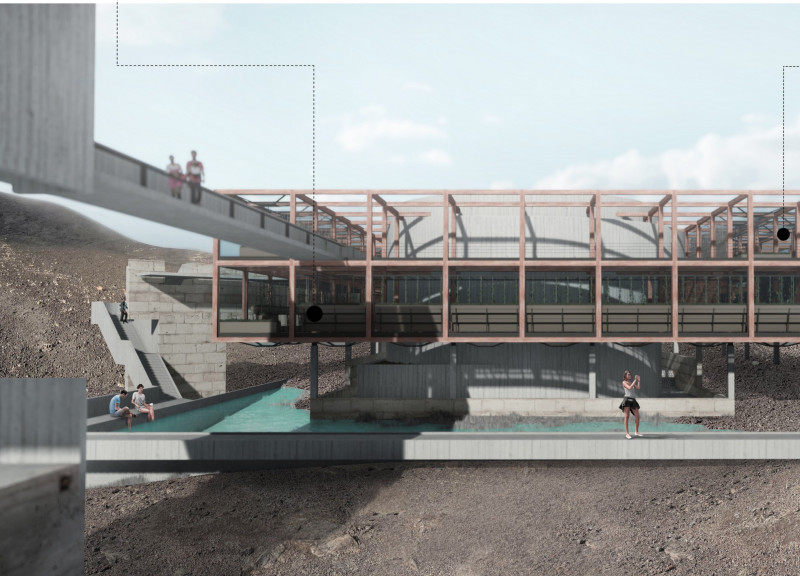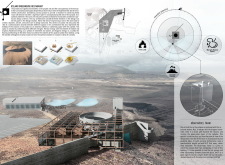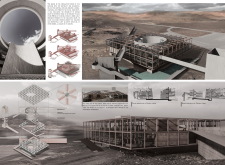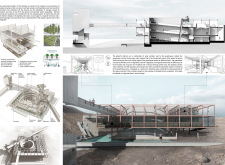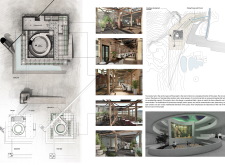5 key facts about this project
The primary function of this restaurant encompasses dining and educational experiences surrounding local food sources. The design features a series of interconnected spaces that facilitate not only meals but also culinary workshops, community events, and the cultivation of local flora, making it a multifunctional space within the community.
Organic Forms and Sustainable Practices
One defining characteristic of the Iceland Greenhouse Restaurant is its use of organic forms throughout the structure. These forms are evident in the flowing architectural lines and the harmonious integration with the surrounding environment. The central atrium serves as the heart of the building, featuring a circular ramp that enhances movement and connectivity. This design not only optimizes flow but also allows for engagement with the adjacent greenhouse areas.
Sustainable design practices are woven into the project’s fabric, utilizing materials like concrete, wood, glass, and steel to promote durability and energy efficiency. The extensive use of glass in the greenhouse sections emphasizes transparency and allows for natural light, supporting a controlled environment for plant growth and providing diners with an immersive experience in the culinary process.
Fluid Spatial Relationships
The layout of the Iceland Greenhouse Restaurant emphasizes fluid spatial relationships that promote social interaction and personal reflection. The structure features designated dining areas that overlook the geothermal landscape, creating visual and physical connections to the environment. The observation tower provides elevated views, enhancing the visitor’s experience of the surrounding topography.
Additionally, the design incorporates intentional circulation routes, guiding visitors through distinct zones of activity while maintaining a cohesive sense of place. This thoughtful approach to spatial organization allows for a diverse range of functions within a single architectural framework.
For a deeper understanding of the architectural strategies employed in the Iceland Greenhouse Restaurant, interested readers are encouraged to explore the architectural plans, sections, and unique design details. These elements reveal how the project effectively merges functionality with aesthetic considerations, providing insight into the innovative ideas that shape its character.


